#product design & development services in USA
Explore tagged Tumblr posts
Text
Ready to transform your online presence? Contact Cuneiform, the trusted web development company in Sheridan, and take your business to the next level.
#Product Design Company in Sheridan#App Development Company#Web Development Company in Sheridan#Mobile app development service in USA
0 notes
Text
Cyber Puzzle Net offers services including Website Development and Digital Marketing Services
Web Design & Development
Create a Powerful Online Presence with Our Expertise
At Cyber Puzzle Net, we specialize in delivering exceptional Web Design and Development services that combine aesthetic appeal with functional excellence. Our goal is to build websites that capture your brand’s essence and provide an outstanding user experience.

Our Services Include:
Custom Web Design: Unique, brand-specific designs.
Responsive Development: Seamless performance on all devices.
UX Design: Intuitive interfaces for better user engagement.
CMS Solutions: Easy content management with platforms like WordPress.
E-Commerce Development: Secure, scalable online stores.
Ongoing Maintenance: Regular updates and support for optimal performance.
Digital Marketing Services
Elevate Your Brand with Comprehensive Digital Marketing Solutions
We offer a full suite of Digital Marketing Services designed to enhance your online presence and drive business growth. Our strategies are tailored to your specific needs, combining innovative techniques with data-driven insights to achieve measurable results.
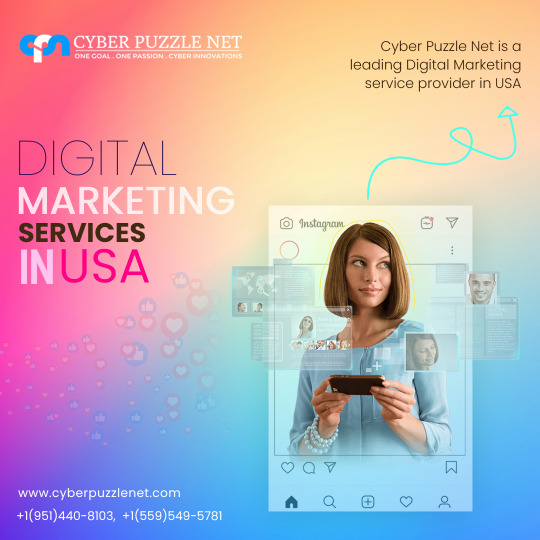
Our Digital Marketing Services Include:
Search Engine Optimization (SEO): Improve your website’s visibility on search engines through on-page and off-page optimization strategies, keyword research, and content enhancement.
Pay-Per-Click (PPC) Advertising: Drive targeted traffic to your site with expertly managed PPC campaigns on platforms like Google Ads and Bing Ads.
Social Media Marketing: Build and engage your audience on platforms like Facebook, Instagram, LinkedIn, and Twitter through tailored content and strategic advertising.
Content Marketing: Create and distribute valuable content that attracts, informs, and retains your target audience, including blog posts, infographics, and videos.
Email Marketing: Develop effective email campaigns to nurture leads, engage existing customers, and drive conversions with personalized messaging and automation.
Analytics and Reporting: Track and analyze campaign performance with detailed reports, providing insights to optimize strategies and improve ROI.
#web design services#digital marketing company#custom software devlopment company#web design company#digital marketing services in usa appkod#digital marketing agency#software development services#web design and development company#web app development company#digital marketing company Cyber Puzzle Net#software development company in Fresno#software development company USA#software development company in California#e commerce web development company#PHP web development company#web design company in India#digital marketing company california#offshore software development services#software product development services
0 notes
Text
#ui ux design company in usa#digital product design company#ui ux design and development services#ui design services company#ux and ui design services and consulting#professional ux/ui design services#software product design services#product design services company#ui ux design and development company#ui ux design and development services company#ui ux design and development agency#ui ux design and development company in usa#ui ux design and development agency usa#best ui ux design company in USA
0 notes
Text
#benefits of building an MVP#MVP development for startups#MVP solutions#advantage of minimum viable products#MVP software development services#MVP development services#MVP development company#Mobile App Development Company In Florida#mobile app development company in usa#top mobile app development company#ui ux design services company#ui ux design companies in usa
0 notes
Text
#online social media canva templates in usa#top video production company in usa#growth marketing agency in india#best influencer marketing agency in delhi#dynamic website designing agency in dwarka delhi#canva bundle templates for various business#social media calendar#digital marketing online in india#website designing company in dwarka#responsive website development and design in delhi#digital marketing services#digital marketing company#online digital marketing#digital marketing website#online marketing agency#google markeinfluencer marketingting agency#influencer marketing#digital agency#influencer marketing platform#seo agency near me
0 notes
Text
The Future of Mobile App Development: Emerging trends to watch out for 2023 and Beyond
Mobile application development has transformed into an essential component of the current digital era. An app exists for almost every facet of life, from financial management to e-commerce, and the count of available apps continues to mount. The domain of mobile app production is continuously progressing, with novel techniques and trends emerging continually. To remain ahead of the game and create original apps that compete, developers must remain up-to-date on the latest improvements.
As the domain persists to change, it is vital to remain mindful of the up-and-coming trends and techniques driving innovation in mobile app production. In this blog post, we will explore the paramount trends in mobile application development and their prospective impact on the domain.
The Evolution of Mobile App Development
The mobile app domain has undergone remarkable growth in recent years. Statista reveals that the count of downloads from global app stores in 2020 reached 204 billion and is anticipated to generate over 613 billion USD in revenue by 2025. This development is driven by several factors, including the burgeoning fame of smartphones, the growing desire for ingenious apps, and the advent of new technologies such as artificial intelligence (AI) and blockchain. As the domain progresses, so does the methodology used to produce apps.
Presently, developers have a plethora of alternatives to select from, including hybrid and web apps. Low-code/no-code app production platforms have also gained traction, enabling developers to create apps with minimal coding experience.
Cross-platform app development has also gained more acceptance, facilitating the creation of apps that operate across various platforms. This technique is gaining popularity as the count of mobile platforms continues to escalate. Developers' ability to produce an app once and launch it across multiple platforms is a significant boon, as it curtails development time and expenses.
The mobile app industry is thriving and is predicted to sustain its growth for the next few years. The cumulative revenue produced by mobile apps soared to 111 billion USD, a 19% year-over-year increase. With such a colossal market opportunity, the future of mobile app development appears to be exceedingly promising.
Overview of the Current Mobile App Development Landscape
Mobile applications have become an indispensable component of our daily existence. An App Annie study indicates that an average individual spends a whopping 3 hours and 40 minutes per day on mobile devices, with a substantial 90% of that time consumed by mobile apps. The market is ripe with potential for application developers.
Presently, numerous corporations are dedicated to building pioneering mobile applications and providing software, such as Facebook, Apple, Google, Microsoft, IBM, and SAP. They are continually pushing the limits of innovation within the industry by developing new technologies and services that simplify application development, deployment, and maintenance across diverse platforms.
As the need for mobile applications expands, developers are presented with even greater prospects to create exceptional and pioneering applications.
Emerging Trends in Mobile App Development
1.Increased use of Artificial Intelligence (AI) and Machine Learning (ML)
AI and ML are among the most auspicious and promising technologies in the domain of mobile app development. By harnessing the capabilities of AI and ML, app developers can create apps that deliver bespoke experiences for users. Furthermore, AI-driven applications possess the aptitude to make superior decisions than their human counterparts, thereby allowing developers to fashion apps that provide real-time insights into customer behavior and preferences.
Through the utilization of AI, app developers can conceive applications that are tailored to the customized needs of individual users, thus enhancing the user experience in a personalized and engrossing manner. AI can also be employed to dispense more precise recommendations to users based on their prior interactions with the app. For instance, a streaming service can utilize AI to propose movies or TV shows to users based on their past viewing habits.
The integration of chatbots and virtual assistants constitutes another facet through which AI is augmenting the mobile app experience. They are frequently employed for customer service, but can also be leveraged for marketing purposes or to address frequently posed queries.
The employment of voice recognition technology embodies another approach through which AI is boosting mobile apps. By capitalizing on voice recognition technology, app developers can create apps that can be controlled through voice commands, thereby enhancing the user experience. This can be utilized for diverse app types like gaming, music streaming, and navigation, among others.
2.Integration of the Internet of Things (IoT)
The advent of the Internet of Things (IoT) is revolutionizing the way in which mobile applications are developed and utilized. Through the integration of IoT, developers can create novel functionalities like geofencing, real-time data analysis, and predictive maintenance. The integration of multiple data sources facilitated by IoT-enabled applications can also provide users with personalized experiences based on their preferences and location.
In addition, IoT is reshaping the healthcare industry. Connected medical devices like smart inhalers, wearables, and contact lenses are assisting healthcare providers in accurately tracking a patient's health. These devices are capable of collecting data in real time and transmitting it to healthcare providers to enable swift action when required.
The rapid expansion of the IoT market presents numerous opportunities for developers who desire to make their mark in this field. Developers have the potential to create groundbreaking solutions that integrate different systems, enhance smart home and smart city applications, and contribute to the betterment of healthcare services.
With the proper expertise and knowledge, developers can be instrumental in shaping the future of IoT and building the next wave of interconnected solutions.
3.Use of Blockchain
Blockchain technology is commonly used in mobile app development for cryptocurrencies like Bitcoin. Its decentralized ledger enables secure and fast transfer of funds worldwide without intermediaries.
A successful implementation of blockchain technology in a mobile app is CryptoKitties, a popular game built on the Ethereum blockchain. Players can buy, sell, and breed their digital cats on the platform, making it one of the most popular blockchain-based games globally. This proves that blockchain technology can create engaging and entertaining mobile apps.
As blockchain technology continues to evolve and expand, we can expect its use to grow in mobile app development. Furthermore, with more companies adopting blockchain technology to store sensitive data like patient records, we may see an increase in blockchain use in healthcare apps.
4.Growth of Augmented Reality (AR) and Virtual Reality (VR)
AR and VR are two technological advancements that are quickly gaining popularity and are being incorporated into mobile app development in increasingly innovative and ingenious ways.
AR and VR are being utilized to craft a more captivating and engrossing user experience, granting individuals the ability to interact with digital content in a more lifelike manner. As an illustration, travel apps such as Yelp integrate AR technology that allows users to explore a location's attractions through a virtual map, while gaming apps such as Pokemon Go leverage AR to empower users to explore their surroundings and engage with virtual creatures in a realistic and convincing way.
Moreover, VR technology is being implemented to construct more immersive and interactive experiences for users. For example, Google's Expeditions app facilitates teachers in taking their students on virtual field trips, presenting 360-degree views of landmarks worldwide. Additionally, the classroom can be brought to life with VR apps like EngageVR, which enable students to engage with 3D objects and simulations in a simulated environment.
As we progress, it is reasonable to anticipate observing more innovative and resourceful applications of VR and AR technologies in mobile app development. Furthermore, as more corporations invest in VR and AR technologies, users can anticipate encountering an even more diverse range of applications for these technologies, extending from medical imaging to gaming and beyond.
5.Use of Cloud-based Technology
The field of mobile app development has undergone a transformation due to cloud technology. The advent of cloud-based app development has allowed developers to create and test apps in a virtual environment, thereby redefining traditional app development processes.
A major advantage of cloud-based app development is the ability to reduce the time and cost involved in developing and deploying apps. The traditional app development model necessitates the use of personal hardware and infrastructure to build and test apps, but cloud-based app development enables developers to utilize virtual machines and cloud services furnished by cloud providers like Amazon Web Services (AWS), Microsoft Azure, and Google Cloud Platform (GCP).
Cloud-based app development also presents developers with greater flexibility and scalability. Developers can effortlessly adjust their cloud resources based on their app's demand and usage, allowing them to optimize their expenses and ensure their app can handle sudden surges in traffic.
Furthermore, cloud-based app development encourages collaboration and sharing of resources. Developers can effortlessly share their code and resources with others, streamlining the process of developing and testing apps collaboratively.
6.Integration of Wearable Technology
Wearable technology has experienced an increase in its fusion with mobile applications, facilitating its users to monitor their physical well-being and conditioning, receive timely notifications, and efficiently control other electronic gadgets via their wearable devices.
One manifestation of the integration of wearable technology in mobile applications is evident in the Strava fitness application, allowing its users to meticulously keep track of their running, cycling, and other exercises through the synchronization of their fitness trackers and smartwatches.
Moreover, the integration of wearable technology into mobile applications holds significant implications for the future of mobile application development. As wearable devices become more sophisticated and high-tech, developers have a vast potential to provide consumers with more immersive, interactive, and innovative mobile app experiences. This is evident in how augmented reality and virtual reality experiences could be amplified by wearable devices, thereby allowing its users to have more natural and compelling interactions with digital content.
Wearable technology also has the potential to create new use cases for mobile applications, such as remote monitoring and device control. For instance, wearable devices could be utilized to operate smart homes and even vehicles remotely.
Overall, wearable technology offers immense opportunities for mobile app developers to design and develop innovative, interactive, and user-friendly mobile app experiences. By incorporating wearable devices into mobile apps, developers can not only improve the user's experience but also open doors to novel use cases and possibilities for mobile app development.
Conclusion
Staying abreast of the latest developments in mobile app development is crucial for developers looking to remain competitive in a rapidly-evolving industry. With user demands and expectations constantly evolving alongside technological advancements, developers must adapt their approaches accordingly to deliver top-notch apps that meet the needs of today's users. Embracing emerging trends is key to achieving these goals, and developers who do so are likely to find success in the highly-competitive world of mobile app development.
Source: Doota | Technology, Design & Innovation Company
For further assistance visit our website.
#doota#ai#ecommerce#digital marketing#product development#games development#web applications#mobile applications#ui/ux#fintech#software#technology#design#innovation#digital#it services#consulting#usa
0 notes
Text
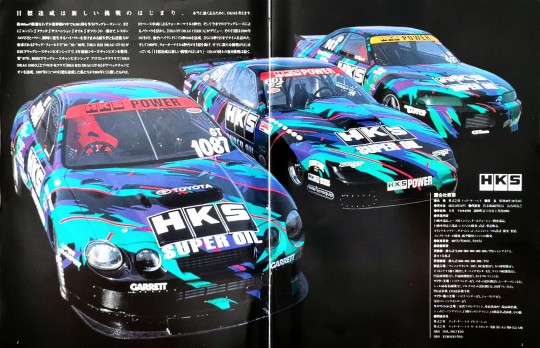
Achieving a goal is the beginning of a new challenge. To run really fast, HKS thinks.
A drag race scene where people compete for 0.001 seconds over a distance of about 400 meters in just a few seconds. '91 is a drag field that demands quick response and power from the engine, clutch, suspension, and even a single drop of oil or gasoline, as well as durability and transmission ability to handle instantaneous high power. -In '95-'96, the ``HKS R32 DRAG GT-R'' won the series championship in the RRC Drag Race Championship for three consecutive years. The following year, in 1997, the ``HKS DRAG 180SX'' in the BERC Drag Race Championship Pro Stock class and the ``HKS R33 DRAG GT-R'' in the Pro GT-R class achieved the Avec Championship. Having achieved one goal in 1997, what we aimed for in 1998 is:
Quarter mile time in 9 seconds with FF base vehicle. They then talked about their know-how from drag racing to date, and ``HKS FF DRAG CELICA'' made its debut. The first goal was achieved on October 9, 1998 at Sendai Highlands with a time of 9.886 seconds. He further improved his time to 9.727 seconds, and in 1999 he set a goal of breaking the quarter mile in the 6-second range, and has already begun a new challenge. "Achieving a goal is the beginning of a new challenge" - HKS' never-ending battle continues
HKS
■Company overview
●Name HKS Co., Ltd. Established October 31, 1971
●Capital 607,475/Kawa Representative Director and President Naruyuki Hasegawa
●Location Head Office 2266 Kamiogawa, Kunikami City, 418-0192
●Business details
Development, design, and product sales of automobile parts, racing engines, turbocharger-related parts, and automotive components and systems Design, development, and manufacturing of original mufflers, suspensions, and engine parts Development of complete cars, development of aircraft engines
●Number of employees: 407 (333%, 74 women)
●Equipment overview
Experiment building: Dynamometer (1,000/800/600~300/200/PS) Chassis dynamo, exhaust gas analyzer
Old experimental building: Dynamometer (600/600-500-200/PS)
Manufacturing factory: 10ft machining center, 5 NC lathes, 41 cam polishing machines, 21 biston narai, 11 turning centers, 21 crank Kenjoshi, Monzen Kendanmei, 21 surface grinders, 1 gun drill machine.
Muffler factory: Pipe bender, robot welding machine, 1 laser machine, shell machine, multi-spot welding machine 11, 100T press, TIG welding machine, CO2 welding machine multi-stage
Muffler 2nd factory: Pipe bender / shirring / Yasuda machining center 1 piece
Suspension factory: Cold solid coiling machine, continuous coiling machine, surface grinding machine, shot peening machine, automatic setting machine, automatic load testing machine, etc.
●Affiliated companies
HKS Aviation Co., Ltd. HKS Service Center (Tokyo/West/Kyu)
HKS USA, INC (USA)
HKS EUROPE()
25 notes
·
View notes
Text
Hey! Everyone should support the writers strike! It’s incredibly important! If you love theatre as well as television, I would like to draw your attention to another group of writers in this country (the USA, unfortunately) that desperately need help.
Playwrights only make on average ten-thousand dollars for each show they produce. This is accounting for royalties, although with incredible luck or a really nice commission those can bring it up to around twenty-thousand. To make matters worse, the average playwright can only produce one show per year. To put that into perspective, in order to make the average American yearly wage of thirty-thousand dollars, a playwright would need to write and produce two to four plays every year in high-end regional theatres. That’s a feature-length original play every three to six months. Most plays take over a year to fully develop.
On top of that, unlike screenwriters who are often employees of a company, playwrights are considered to be owners of capital, as we own the exclusive rights to produce their show. Because of that, we are not allowed to unionize. This means that our only form of protection, the Playwrights Guild of America, can’t do much other than help playwrights avoid bad contracts. This is an extremely valuable service to be sure, but it can’t solve the problem that only the luckiest playwrights in the country can make a living on this art form.
There are a lot of other issues that compound this problem. Most plays only ever receive one run, which means that playwrights don’t usually earn residuals. Many theaters will contract staged readings of a play for which they do not pay the author. While theaters expect playwrights to be present during the development of a new play, they won’t pay them for their time during early production meetings, auditions, or rehearsals. It all combines to make kind of a perfect storm.
If you like live theatre, this should concern you! If you feel like modern theatre is stale and repetitive, it’s because people who are truly passionate about play writing are forced to split their time between multiple forms. Without enough dedicated theatre writers, we lose access to the originality and novelty that set the stage apart from the screen. Don’t get me wrong, there are some extremely talented and devoted playwrights out there who are able to make things work. But how can people expect great work from us when we can’t even do this work full-time?
So what can you do to help? The first thing you can do is SUPPORT THE WRITER’S STRIKE. Because most playwrights can’t make a living writing plays, they often supplement work in the theatre with work on TV or in other spaces. Helping out Hollywood writers will help put a lot of playwrights in better positions.
You can also support theaters like Playwrights Horizons in Washington DC who provide playwrights with full fellowships in exchange for their plays. These are valuable as they allow a playwright to spend all of their time on their chosen medium rather than needing to juggle multiple jobs to make ends meet.
Other than this, it’s hard to say what normal people can actually do here. It would be nice if there could be a union for playwrights like there is for actors, but as long as playwrights own the means of production this would probably only shift the problem from our backs onto the backs of actors, directors, and designers. And budgets for new shows are already tight enough as things stand, it seems like a lot to ask to carve more of that money out for writers when things are already difficult.
Here’s an excellent article about the situation from American Theatre that goes over a lot of the information I did here in more detail (without the pro-union editorialization.) https://www.americantheatre.org/2014/12/10/paying-playwrights-more-than-play-money/
TLDR; Helping screenwriters helps playwrights too, but a lot more needs to be done before we’re out of the woods. The average playwright can’t make a living play writing, and the only writers in the industry who can are extremely lucky. Trying to solve this problem is critical for the future of theatre.
87 notes
·
View notes
Text
...im so angry in a way i can't even quantify.
his parents tried to give him a massive wad of cash as a wedding gift, which he refused and told them to "put towards his sister's college if they can't afford it" cause he knew it was another quid-pro-quo
so, in front of his sister they admitted the years of bullshit they've been putting us thru (including her cause they were threatening to withhold college tuition to try and make her harass us too?).....hurting our 11 year relationship was cause they wanted him to be destitute so he'd "have to stop slacking and get a job using his finance degree"
chat.... he's an imports manager.
im going to FUCKING SCREAM??? HES A MOTHER FUCKING IMPORTS MANAGER "not using his finance degree" my ass? what the fuck he's an imports manager who services 8/10 of the top retailers in the usa for his company....(which also sell product ive done art on cause im on a top 10 global ranked brand for apparel lol??)
we're literally so fucking privileged cuz we both got jobs in the field we wanted near immediately out of college with 0 loan debt cause we went to cheapy schools and had partial scholarships........ we both ended up on apparel product development design teams.... him on costing and me on art???? what. the. fuck.
but his cousin who lives in a literal TRAILER is successful cause he "owns a business" (bankrupted three restaurants so far babe), and were "poor" cause we live in an apartment (in a neighborhood with a 110k median household income??? while we're statistically upper middle class now before 30 in fucking nyc.....?)
and his literally illiterate aunties who don't speak english or mandarin....only fuzhounese so they're completely isolated, tooooottttallly know more about what a "finance degree is for" than someone who went to a top 25 globally business school and two people who literally met at one of the top fucking public high schools in the entire mother fucking united states of america???? that has a focus on fucking math?????? FUCK? we went to math nerd school and math nerding gets us raises....i have an arts job and all my raises are based on me being able to write scripts....cause im naturally good at math.
"they're elders so they know more" well they sure as well don't know how to fucking READ? so they...ummmmm.... don't? i would not take career advice from someone who cant.....read? probably perfectly nice people.......but they cant......read?
#personal#FUCKING WE WENT TO FUCKING STUYVESANT FUCK??????? ITS STUYVESANT????????? WE WENT TO MOTHER FUCKING STUY WHAT THE FUCK???????#its....stuy..............?#im litterally rofl over this in a way though?#like if i didnt have to live through this it would be hilarious huh????
3 notes
·
View notes
Text
Simplifying Website Design and Development: Your Ultimate Guide
Simplifying Website Design and Development: Your Ultimate Guide
In today's digital age, having a strong online presence is essential for businesses of all sizes. A well-designed and developed website not only enhances your brand image but also serves as a powerful marketing tool to attract and engage customers. In this comprehensive guide, we'll explore everything you need to know about website design and development, including services, companies, and agencies in the USA and Canada.

Understanding Website Design and Development
Website design and development encompass the process of creating and building a website from scratch or redesigning an existing one. It involves various elements such as layout design, user interface (UI) and user experience (UX) design, coding, content creation, and optimization for search engines.
Website Design and Development Services
Professional website design and development services cater to the diverse needs of businesses seeking to establish or enhance their online presence. These services typically include:
Custom Website Design: Tailored design solutions to reflect your brand identity and meet specific business objectives.
Responsive Web Development: Building websites that adapt seamlessly to different devices and screen sizes for optimal user experience.
E-commerce Development: Creating online stores with secure payment gateways, product catalogs, and shopping cart functionality.
Content Management Systems (CMS): Integration of user-friendly CMS platforms like WordPress, Joomla, or Drupal for easy website management.
Search Engine Optimization (SEO): Implementing strategies to improve website visibility and rankings on search engine results pages (SERPs).
Website Maintenance and Support: Ongoing support, updates, and maintenance services to ensure website performance and security.
Website Design and Development Companies and Agencies
In the USA and Canada, numerous companies and agencies specialize in website design and development. These firms offer expertise in creating high-quality websites tailored to clients' unique needs and preferences. Some key characteristics to look for in a reputable website design and development company or agency include:
Experience and Expertise: Choose a company with a proven track record of delivering successful projects across various industries.
Portfolio: Review their portfolio of past work to gauge the quality and diversity of their designs and developments.
Client Reviews and Testimonials: Read reviews and testimonials from previous clients to assess their satisfaction and experiences.
Communication and Collaboration: Look for a company that emphasizes clear communication and collaboration throughout the project lifecycle.
Affordability and Value: Consider companies that offer competitive pricing without compromising on quality and value-added services.
Website Design and Development Companies in the USA and Canada
In the USA, reputable website design and development companies include:
ABC Web Solutions: A leading web development firm specializing in custom website design, e-commerce solutions, and digital marketing services.
XYZ Creative Agency: Known for innovative web design, responsive development, and SEO optimization strategies tailored to clients' specific needs.
123 Digital Studio: Providing comprehensive website design and development services, including UI/UX design, CMS integration, and ongoing support.
In Canada, notable website design and development companies include:
Maple Leaf Web Design: Offering professional website design, e-commerce development, and SEO services for businesses across Canada.
Great White North Digital: Specializing in responsive web design, custom development, and online marketing solutions to help Canadian businesses thrive online.
True North Web Solutions: A full-service web agency providing creative design, robust development, and strategic digital solutions tailored to clients' goals.
Conclusion
Investing in professional website design and development is crucial for businesses looking to establish a strong online presence and attract customers. By understanding the services offered and choosing reputable companies or agencies, you can create a visually appealing, functional, and user-friendly website that drives business growth and success.
Whether you're based in the USA or Canada, there are numerous options available to help you achieve your website design and development goals. Take the time to research, compare, and select the right partner to bring your vision to life and propel your business forward in the digital landscape.
#mobilepayment#ed teach#fintech startup#website#web development#web developing company#webcore#website development#smm services#seo services#webdesign#fintechindustry#investment#google ads#google adwords#google ad manager#google ad agency
16 notes
·
View notes
Text
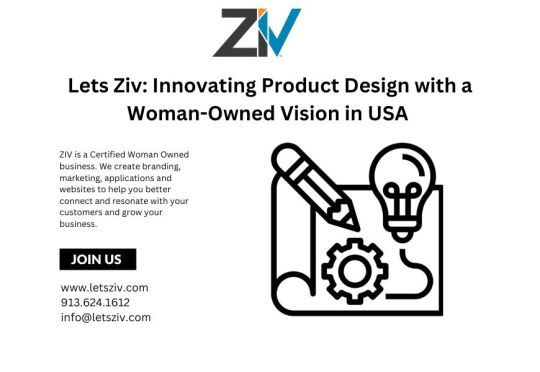
Lets Ziv: Innovating Product Design with a Woman-Owned Vision in USA
Introduction
When it comes to innovative solutions in the realm of product management, agencies play a crucial role in turning concepts into reality. Among these agencies, woman-owned businesses are carving a niche with their distinctive perspectives and strategies. Enter Lets Ziv, a groundbreaking company that’s redefining product design and management.
What is a Product Management Agency?

A product management agency bridges the gap between conceptual ideas and market-ready products. These agencies provide end-to-end services, including design, development, and strategy execution. By ensuring seamless collaboration across teams, they help businesses innovate efficiently and effectively.
The Importance of Woman-Owned Agencies
Woman Owned Product Design Agency bring diversity to the table, fostering inclusive solutions. Studies consistently show that diverse leadership teams outperform their counterparts in innovation and financial success. These agencies challenge industry norms and inspire change, proving that gender equity is not just ethical but also profitable.
Meet Lets Ziv: Woman-Owned Excellence
Founded with a passion for creativity and collaboration, Lets Ziv is a woman-owned product design agency dedicated to delivering exceptional results. Their mission? To empower businesses with innovative, user-friendly designs that resonate with audiences worldwide.
Core Services Offered by Lets Ziv
Product Design and Development: Lets Ziv crafts products that blend aesthetics with functionality.
Market Research and Strategy: By understanding consumer behavior, the agency tailors strategies to align with market trends.
Project Management Solutions: From ideation to launch, Lets Ziv ensures smooth project execution.
Unique Approach to Product Design
At Lets Ziv, the focus is always on the user. By leveraging advanced tools like AI and UX research, the agency creates products that not only meet but exceed user expectations.
Empowering Women in Product Management
Lets Ziv stands out as a beacon of empowerment. Through mentorship programs and partnerships, the agency nurtures aspiring women in tech, ensuring that talent knows no gender.
Why Choose Lets Ziv?
What sets Lets Ziv apart is their commitment to innovation and a client-first approach. Their tailored solutions ensure that every project is unique, impactful, and aligned with client goals.
Key Projects and Achievements
Lets Ziv has spearheaded numerous projects across industries, earning accolades for their designs and contributions to product innovation.
Challenges Faced by Woman-Owned Agencies
Despite their contributions, woman-owned agencies often face challenges such as bias and limited access to funding. Lets Ziv navigates these hurdles with resilience and creativity.
How Lets Ziv Overcomes Challenges
Through strategic planning, networking, and an unwavering commitment to quality, Lets Ziv continues to thrive, setting an example for others in the industry.
Sustainability in Product Management
Incorporating eco-friendly practices, Lets Ziv ensures that their designs are sustainable, proving that innovation can coexist with responsibility.
Future of Product Design Agencies
The future is bright for woman-owned product design agencies. With a growing emphasis on diversity and sustainability, companies like Lets Ziv are poised to lead the industry.
Collaborating with Lets Ziv
Partnering with Lets Ziv means embarking on a journey of innovation. Clients can expect transparent communication, expert guidance, and exceptional results.
Conclusion
Lets Ziv exemplifies the power of woman-owned businesses in transforming industries. With their innovative approach to product design, they are not just building products—they are shaping the future.
FAQs
What services does Lets Ziv offer? Lets Ziv specializes in product design, market research, and project management, providing end-to-end solutions for businesses.
Why choose a woman-owned agency like Lets Ziv? Woman-owned agencies bring unique perspectives and foster inclusive, innovative solutions, as demonstrated by Lets Ziv’s achievements.
How does Lets Ziv ensure sustainability? The agency integrates eco-friendly practices into its designs, focusing on long-term environmental and business value.
Can Lets Ziv handle projects in various industries? Yes, Lets Ziv has a diverse portfolio, showcasing their adaptability and expertise across multiple sectors.
What makes Lets Ziv unique? Lets Ziv stands out for its user-centric designs, innovative strategies, and commitment to empowering women in the tech industry.
#Woman Owned Product Design Agency#Product Management Agency#Product management company#product desgin company#LetsZiv#ProductManagement#WomanOwnedBusiness#ProductDesign#Innovation#DiversityInLeadership#SustainableDesign#EmpoweringWomen#CreativeSolutions#UserCentricDesign#BusinessInnovation#WomenInTech#LeadershipMatters#ProductDevelopment#InclusiveInnovation
2 notes
·
View notes
Text
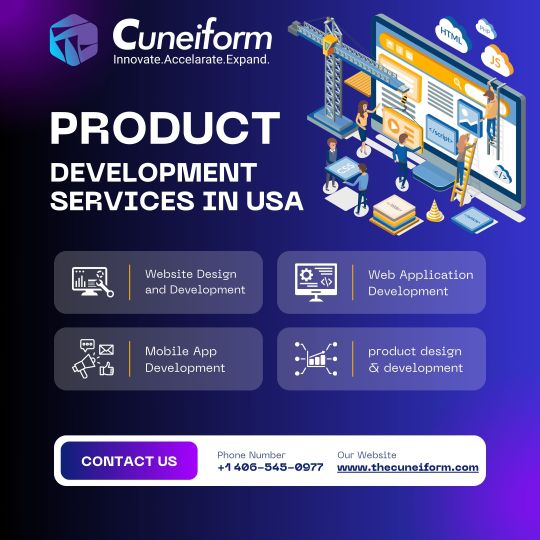
At Cuneiform we offer expert product development services in USA to bring your vision to life. Our team specializes in every stage, from initial concept and design to prototyping and final production.
#Mobile App Development Company Wyoming#product design & development services in USA#Product development services in USA#Web development company in Wyoming
0 notes
Text
3D Product Animation Services in the USA: Captivating Audiences with Visual Storytelling
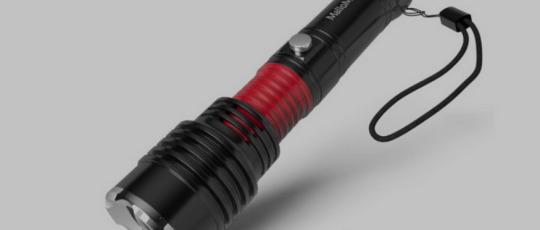
What is 3D Product Animation?
3D product animation involves creating animated, three-dimensional visual representations of a product. Unlike static images, 3D animations allow viewers to see the product from multiple angles, explore its features, and even witness its functionality in action. This immersive approach not only enhances customer understanding but also helps in conveying the brand’s message more effectively.
The Importance of 3D Product Animation
Enhanced Engagement: In a world where attention spans are dwindling, captivating content is crucial. 3D product animations engage viewers by combining visual appeal with informative content. When consumers can see a product in action, it helps create a connection that static images simply cannot achieve.
Complex Demonstrations Made Easy: Certain products, especially those with intricate functionalities, can be difficult to explain through text or simple images. 3D animations simplify this process by visually demonstrating how a product works. For example, a tech gadget can be animated to show its features, usability, and integration into everyday life.
Versatile Marketing Tool: 3D product animations can be used across various platforms, including websites, social media, email campaigns, and presentations. This versatility allows brands to reach their audience through multiple channels, reinforcing their message and enhancing brand recognition.
Increased Sales Conversion: According to studies, products that feature videos or animations have higher conversion rates. By showcasing a product’s unique features and benefits, 3D animations can significantly influence a consumer’s purchasing decision.
Competitive Advantage: In a crowded marketplace, standing out is essential. 3D product animations provide brands with a unique way to showcase their offerings, differentiating them from competitors who rely solely on traditional marketing methods.
The Process of Creating 3D Product Animations
Creating a compelling 3D product animation involves a multi-step process that requires a blend of creativity, technical skills, and collaboration between the client and the animation team. Here’s a breakdown of the typical workflow:
1. Concept Development
Before diving into the animation process, it’s essential to establish a clear concept. This stage involves understanding the product, its target audience, and the message that needs to be conveyed. Brainstorming sessions between the client and the animation team can help identify key selling points and narrative elements.
2. Storyboarding
Once the concept is defined, the next step is to create a storyboard. This visual representation outlines the sequence of events in the animation, including camera angles, transitions, and key moments. Storyboarding helps ensure that everyone involved has a clear understanding of the project’s direction.
3. 3D Modeling
This phase involves creating a digital 3D model of the product. Using specialized software, animators craft a detailed representation that captures the product’s design, colors, textures, and features. This model serves as the foundation for the animation.
4. Animation
With the 3D model complete, animators bring the product to life. This step includes adding movements, effects, and transitions that demonstrate the product’s functionality. For example, a product could be animated to show how it opens, operates, or interacts with other objects.
5. Rendering
After the animation is complete, the final step is rendering. This process converts the animated model into a video format, ensuring that all visual and audio elements are perfectly synchronized. Rendering can be resource-intensive and may take time, depending on the complexity of the animation.
6. Feedback and Revisions
Client collaboration is crucial throughout the animation process. After the initial render, feedback is solicited, and revisions may be made to ensure the final product aligns with the client’s vision.
Applications of 3D Product Animation
3D product animation services find applications across various industries, including:
Consumer Electronics: Tech companies use 3D animations to demonstrate the features of new gadgets, making it easier for consumers to understand their benefits.
Healthcare: Pharmaceutical companies can animate complex medical devices, helping healthcare professionals and patients grasp their functionalities.
Automotive: Car manufacturers create 3D animations to showcase vehicle features, interiors, and performance, enticing potential buyers.
Fashion: Clothing brands can use 3D animations to highlight the fabric, fit, and design of their apparel, creating virtual fashion shows.
Manufacturing: Industrial companies often use 3D animations to visualize machinery and equipment, making it easier to explain complex processes.

FAQs About 3D Product Animation Services in the USA
1. What are the benefits of using 3D product animation?
3D product animation enhances engagement, simplifies complex demonstrations, increases sales conversion rates, and provides a competitive edge in marketing.
2. How long does it take to create a 3D product animation?
The timeline varies based on the project’s complexity, but typically it takes a few weeks to complete the entire process from concept development to final rendering.
3. What is the cost of 3D product animation services?
Costs depend on various factors, including the length of the animation, complexity, and the animation studio’s expertise. It’s advisable to request quotes from multiple providers to find a suitable option.
4. Can I see examples of previous work before hiring an animation service?
Yes, reputable animation studios usually have portfolios showcasing their previous work. Reviewing these can give you a sense of their style and capabilities.
5. Is client collaboration involved during the animation process?

Conclusion
As the demand for engaging and informative marketing content continues to grow, 3D product animation services offer a powerful solution for brands in the USA. By leveraging this innovative technology, businesses can elevate their marketing strategies, enhance customer understanding, and ultimately drive sales.
If you’re looking to make an impact with your product presentations, consider partnering with 3dmodellingservices for professional and high-quality 3D animations tailored to your needs. Transform the way you showcase your products and stand out in today’s competitive landscape!
2 notes
·
View notes
Text
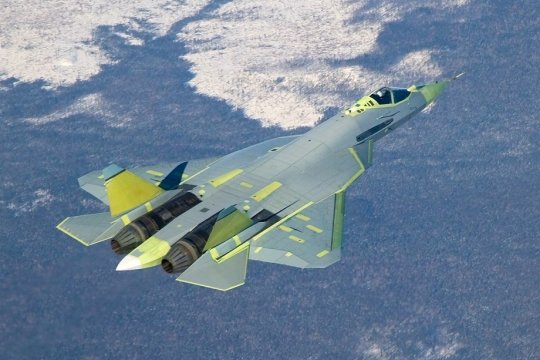
14 years ago, I flew the first Su-57 (PAK FA)
Fernando Valduga By Fernando Valduga 01/29/2024 - 23:10in History, Military
14 years ago, an experimental prototype (T-50-1) of an aircraft created under the "Prospective Frontline Aviation Airborne Complex" program (PAK FA), made its first flight on January 29, 2010. In the last 14 years, the fifth-generation fighter, which became Su-57, has passed almost all the necessary tests and entered service in the Russian Aerospace Forces. But the development has been slow.
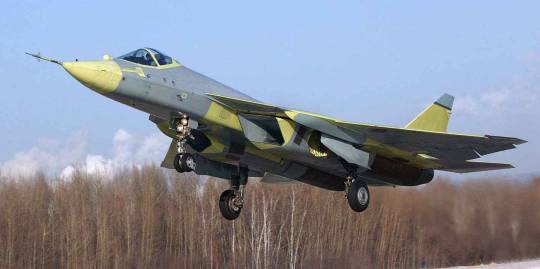
The Su-57 is a fifth-generation multifunctional fighter developed by the Sukhoi Company of Russia (part of United Aircraft Corporation). It was designed to compete with other fifth-generation fighters, such as the F-22 Raptor. The aircraft received several designations during the years of development. Sukhoi used the alphanumeric index "owner" "T-50". Government agencies mention it more often in the context of the PAK FA program (Perspektivny Aviatsionny Kompleks Frontovoy Aviatsii). The Ministry of Defense assigned it the designation Su-57, in fact, the military speaks of "an aircraft with its original appearance" (with engines "Product 117") and "aircraft with second stage engine" ("Product 30′′). NATO gave the codename Felon.
youtube
A total of ten T-50 flight prototypes and three of static ground tests were built for preliminary flight tests and state tests.
Since his first flight in 2010 and after going through several rounds of testing and development, he entered service in the Russian Air Force on December 25, 2020 in one of the aviation regiments of the Southern Military District, at Lipetsk Air Base. This initial production batch would be used for military evaluation, tactical development and crew conversion training. The first fully operational Su-57 regiment of 24 aircraft is expected to be equipped by 2025
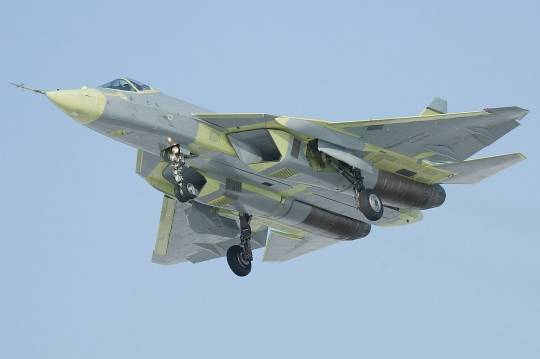
According to several reports, the unit cost of the Su-57 is estimated at about 40-50 million dollars per aircraft. This makes it significantly cheaper than other fifth-generation fighters, such as the F-35 and F-22, which cost about $80-100 million and $150-200 million per aircraft, respectively.
Although it was put into service by the Russian Air Force in 2020 and, although it has participated in a series of military exercises and test flights, it has not yet been officially used in real combat. However, there have been reports from the United Kingdom intelligence where it was reported that Russia used the Su-57 against Ukraine in 2023.
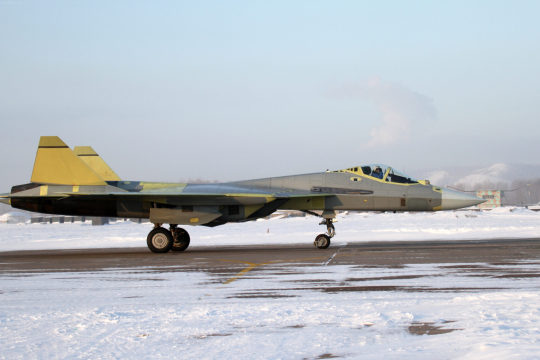
The Russian Air Force has so far received 22 Su-57 fighters, with plans to acquire additional units in the coming years. These aircraft are part of a larger order of 76 Su-57 announced by the Russian government in 2018.
It is worth mentioning that the production of the Su-57 has been somewhat slow due to delays in the development of the aircraft and problems with its engines, among other factors. However, the Russian government stated that it plans to accelerate the production of the Su-57 in the coming years, with the aim of putting in the field a greater number of these advanced fighters in the Russian Air Force.
Tags: Military AviationRussian Air ForceHISTORYPAK FA/T-50 – Perspektivny Aviatsionny Kompleks Frontovoy Aviatsii— Future Air Tactical SystemSukhoi Su-57 Felon
Sharing
tweet
Fernando Valduga
Fernando Valduga
Aviation photographer and pilot since 1992, he has participated in several events and air operations, such as Cruzex, AirVenture, Dayton Airshow and FIDAE. He has works published in specialized aviation magazines in Brazil and abroad. He uses Canon equipment during his photographic work in the world of aviation.
Related news
MILITARY
Czech Republic officially joins the global F-35 Lightning II team
29/01/2024 - 19:37
MILITARY
Japan and the USA agree on artificial intelligence research for drones to help new fighters
29/01/2024 - 19:04
MILITARY
Pentagon discloses how the training of Ukrainian pilots on F-16 jets in the US is going
29/01/2024 - 16:00
JAS39 Gripen Fighter from the Czech Republic and a U.S. Air Force F-35. (Photo: Martin Král)
MILITARY
Czech Republic and Germany plan future cooperation between air forces
29/01/2024 - 14:00
INCIDENTS
RAF Voyager crew is startled with burst tire during takeoff
29/01/2024 - 11:30
MILITARY
United Kingdom offers replacement of Storm Shadow missiles by German Taurus missiles to help Ukraine
29/01/2024 - 09:30
7 notes
·
View notes
Text
Best Social media marketing company in India
"Looking for the perfect digital media calendar to complement and Explore our comprehensive collection of 30 Ultimate Forex Trading Social Media Posts Canva boost your online presence. Visit our blog for valuable insights on using these templates. "Enhance your Forex trading social media strategy, the best social media marketing company in India. Learn how digital marketing franchises and SEO. Stay ahead in the Forex trading game with the support of a leading digital marketing company!" Now Visit our Company
#online social media canva templates in usa#dynamic website designing agency in dwarka delhi#canva bundle templates for various business#best influencer marketing agency in delhi#top video production company in usa#digital marketing online in india#growth marketing agency in india#social media calendar#responsive website development and design in delhi#website designing company in dwarka#Best Social media marketing company in India#digital marketing franchises#seo company#influencer marketing#marketing agency near me#ppc agency#ppc marketing#ppc services
0 notes
Text

Curtiss SB2C-5 Helldiver
The Helldiver was developed to replace the Douglas SBD Dauntless. It was a much larger aircraft, able to operate from the latest aircraft carriers and carry a considerable array of armament. It featured an internal bomb bay that reduced drag when carrying heavy ordnance. Saddled with demanding requirements set forth by both the U.S. Marines and United States Army Air Forces, the manufacturer incorporated features of a "multi-role" aircraft into the design.
The Model XSB2C-1 prototype initially suffered development issues connected to its Wright R-2600 Twin Cyclone engine and three-bladed propeller; further concerns included structural weaknesses, poor handling, directional instability, and bad stall characteristics. In 1939, a student took a model of the new Curtiss XSB2C-1 to the MIT wind tunnel. Professor of Aeronautical Engineering Otto C. Koppen was quoted as saying, "if they build more than one of these, they are crazy". He was referring to controllability issues with the small vertical tail.
The first prototype made its maiden flight on 18 December 1940. It crashed on 8 February 1941 when its engine failed on approach, but Curtiss was asked to rebuild it. The fuselage was lengthened and a larger tail was fitted, while an autopilot was fitted to help the poor stability. The revised prototype flew again on 20 October 1941, but was destroyed when its wing failed during diving tests on 21 December 1941.
Large-scale production had already been ordered on 29 November 1940, but a large number of modifications were specified for the production model. Fin and rudder area were increased, fuel capacity was increased, self-sealing fuel tanks were added, and the fixed armament was doubled to four 0.50 in (12.7 mm) machine guns in the wings, compared with the prototype's two cowling guns. The SB2C-1 was built with larger fuel tanks, improving its range considerably.
The program suffered so many delays that the Grumman TBF Avenger entered service before the Helldiver, even though the Avenger had begun its development two years later. Nevertheless, production tempo accelerated with production at Columbus, Ohio and two Canadian factories: Fairchild Aircraft Ltd. (Canada), which produced 300 (under the designations XSBF-l, SBF-l, SBF-3, and SBF-4E), and Canadian Car and Foundry, which built 894 (designated SBW-l, SBW-3, SBW-4, SBW-4E, and SBW-5), these models being respectively equivalent to their Curtiss-built counterparts. A total of 7,140 SB2Cs and equivalent models were produced in World War II.
Initially poor handling characteristics and late modifications caused lengthy delays to production and deployment, to the extent that it was investigated by the Truman Committee, which turned in a scathing report. This contributed to the decline of Curtiss as a company. Neither pilots nor aircraft carrier skippers seemed to like it. Nevertheless, the type was faster than the Dauntless, and by the end of the Pacific War, the Helldiver had become the main dive bomber and attack aircraft on USN carriers.
By the time a land-based variant, known as the A-25 Shrike, became available in late 1943, the Western Allied air forces had abandoned dedicated dive-bombers. A majority of A-25s delivered to the US Army Air Forces were transferred to the US Marine Corps, which used the type only in one side campaign and non-combat roles. The British Royal Navy and the Royal Australian Air Force also cancelled substantial orders, retaining only a few aircraft for research purposes.
Nicknames for the aircraft included "Big-Tailed Beast" or just "Beast", "Two-Cee", and "Son-of-a-Bitch 2nd Class"; the latter nickname was derived from the name SB2C and the aircraft's reputation for having difficult handling characteristics.
Photo-Description:
Aircraft
Commemorative Air Force
Curtiss SB2C-5 Helldiver
Reg.: N92879
Code: 32
Location & Date
Wichita - McConnell AFB (IAB / KIAB)
Kansas, USA - September 25, 2010
Caption:
Photographer:
J Snyder (Oklahoma, USA)
18 notes
·
View notes